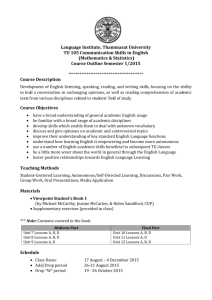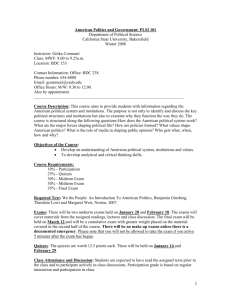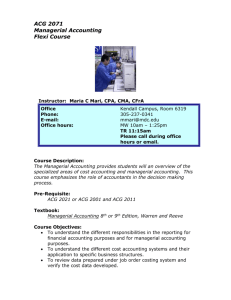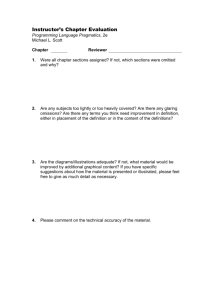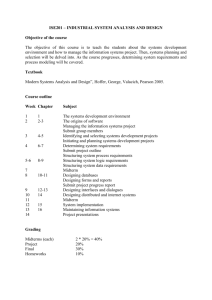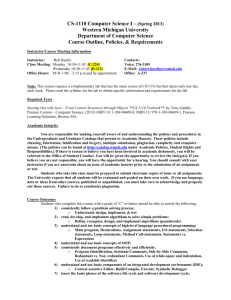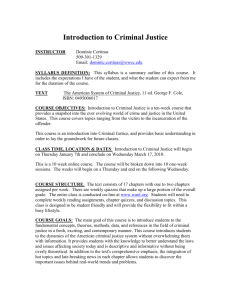Criminal Justice 3600 TR Statistics
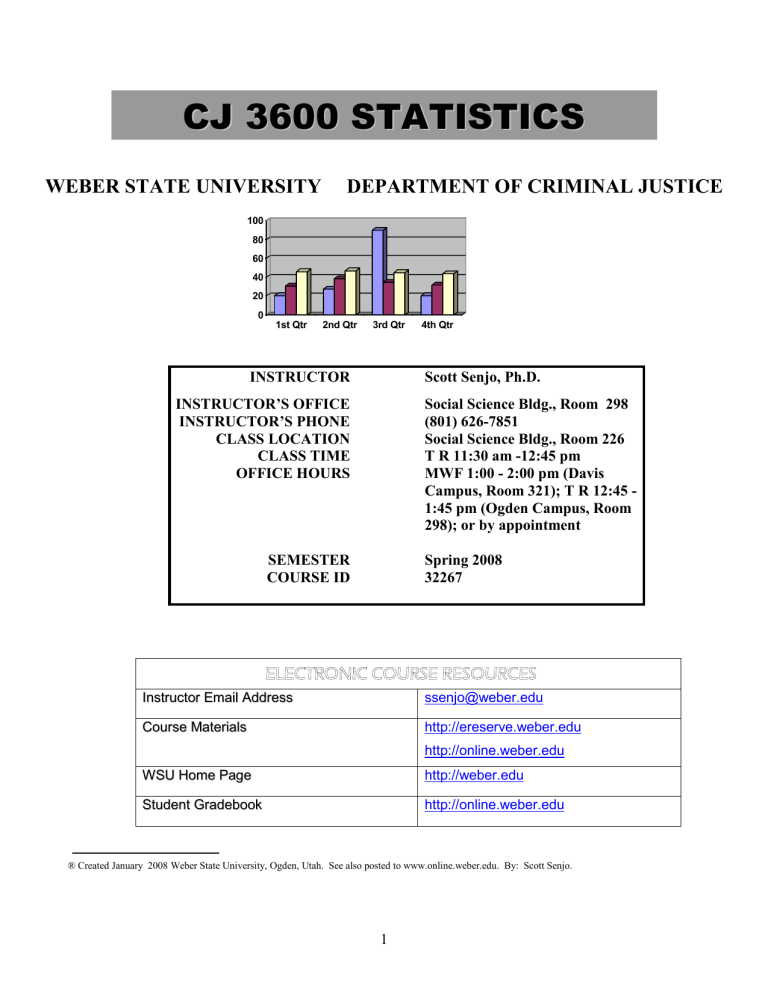
C J 3 6 0 0 S T A T I I S T I I C S
WEBER STATE UNIVERSITY DEPARTMENT OF CRIMINAL JUSTICE
100
80
60
40
20
0
1st Qtr 2nd Qtr 3rd Qtr 4th Qtr
INSTRUCTOR
INSTRUCTOR’S OFFICE
INSTRUCTOR’S PHONE
CLASS LOCATION
CLASS TIME
OFFICE HOURS
SEMESTER
COURSE ID
Scott Senjo, Ph.D.
Social Science Bldg., Room 298
(801) 626-7851
Social Science Bldg., Room 226
T R 11:30 am -12:45 pm
MWF 1:00 - 2:00 pm (Davis
Campus, Room 321); T R 12:45 -
1:45 pm (Ogden Campus, Room
298); or by appointment
Spring 2008
32267
I I n s t t r u c t t o r r E m a i l l A d d r r e s s
C o u r r s e M a t t e r i i a l l s
W S U H o m e P a g e
S t t u d e n t t G r r a d e b o o k ssenjo@weber.edu
http://ereserve.weber.edu
http://online.weber.edu
http://weber.edu
http://online.weber.edu
® Created January 2008 Weber State University, Ogden, Utah. See also posted to www.online.weber.edu. By: Scott Senjo.
1
Table of Contents
Table of Contents .....................................................................................................2
Course Description...................................................................................................3
Course Objectives ....................................................................................................3
Expected Outcomes .................................................................................................3
Services For Students With Disabilities ..................................................................4
Required Texts .........................................................................................................4
Test and Assignment Grading ..................................................................................4
Grade Scale ..............................................................................................................4
Course Schedule................................................................................................... 4-6
Participation .............................................................................................................6
Attendance ...................................................................................................6
In-Class Assignments............................................................................... 6-7
Examinations and Quizzes .......................................................................................7
Midterm Examinations.................................................................................7
Final Examination ........................................................................................7
Where To Take The Exams .........................................................................7
Frequently Asked Questions ....................................................................................8
Appendix A. Dr. Senjo Research Publications .......................................................9
2
COURSE DESCRIPTION
This course will examine statistics which are used in the social and behavioral sciences to describe various social phenomenon and deal with public policy questions involving social problems. The appropriate use of statistics can help us get a handle on the apparent complexity of social activity. The incorrect application of statistical measures can mislead policymakers when they attempt to formulate police responses to complicated social issues. To avoid being mislead by statistical applications, it is important to study the fundamental principles, common to all statistical techniques, and apply them to a wide range of social problem areas. In this course, we will attempt to focus on those fundamental principles and how they operate in a variety of contexts. A familiarity with algebra and algebraic notation is expected. This course must meet the
Weber State University quantitative literacy requirement.
COURSE OBJECTIVES
1. Understanding Descriptive Statistics : The use of the techniques common for summarizing information in ways that can be readily understood, convey meaning and allow comparisons.
2.
Understanding Inferential Statistics : Working with questions concerning the generalizability of descriptions and the probabilities of various arrangements of observations given specific assumptions about the ways information is gathered.
3.
Understanding Statistical Computation : Using a empirical research data set and statistical computation software to gain an understanding for how statistical measures are achieved.
EXPECTED OUTCOMES
1.
The student should be able to summarize data and present the results in a frequency distribution, bar graph, or pie graph.
2.
The student should demonstrate the ability to determine whether a set of research findings can be applied to the general population and why.
3. The student should demonstrate the ability to develop, interpret, and analyze contingency table data.
3
SERVICES FOR STUDENTS WITH DISABILITIES
Any student who may need accommodations or services due to a disability can contact
Services for Students with Disabilities (SSD) in Room 181 of the Student Services
Center, WSU Ogden Campus. SSD can arrange to provide various course materials
(such as examinations or this syllabus) in alternative formats where needed. For SSD policies and procedures, please visit www.weber.edu/ssd
REQUIRED TEXT
1. Miethe, Terance D. (2007). Simple Statistics: Applications in
Criminology and Criminal Justice . Los Angeles, CA: Roxbury
Publishing Co. ISBN: 978-1-933220-06-6.
TEST AND ASSIGNMENT GRADING
Final Examination 20%
Midterm Examination #1 20%
Midterm Examination #2 20%
Midterm Examination #3 20%
In-Class Quizzes 20%
100%
GRADE SCALE
100-93% (A); 92.9-90% (A-); 89.9-87% (B+); 86.9-83% (B); 82.9-80% (B-); 79.9-77%
(C+); 76.9-73% (C); 72.9-70% (C-); 69.9-67% (D+); 66.9-63 (D); 62.9-60% (D-); 59.9-0%
(E).
COURSE SCHEDULE
WEEK 1
January 8 – Introduction and Course Overview. Miethe, Chapter One. Introduction to
Statistical Thinking.
January 10 - Miethe, Chapter One. Introduction to Statistical Thinking.
WEEK 2
January 15 - Miethe, Chapter One. Introduction to Statistical Thinking.
January 17 - Data Collection in Criminal Justice: UCRs, NCVS, NIBRS
WEEK 3
January 22 - Miethe, Chapter Two. Garbage In, Garbage Out (GIGO).
4
January 24 - Miethe, Chapter Two. Garbage In, Garbage Out (GIGO). Miethe, Chapter
Three. Issues in Data Preparation.
WEEK 4
January 29 - Miethe, Chapter Three. Issues in Data Preparation.
January 31 – Miethe, Chapter Three. Issues in Data Preparation.
WEEK 5
February 5 – Midterm Examination #1. Social Science Testing Center, Social Science
Building, Basement Level, Room 038. Phone: (801) 626-6847. You can take the exam anytime during the day, but only two hours are allowed to complete the exam
February 7 - Miethe, Chapter Four. Displaying Data in Tables and Graphic Form.
WEEK 6
February 12 - Class Cancellation. National Cybercrime Symposium. Long Beach, CA.
Feb. 11-14.
February 14 - Class Cancellation. National Cybercrime Symposium. Long Beach, CA.
Feb. 11-14.
WEEK 7
February 19 - Miethe, Chapter Five. Modes, Means, Medians, and More.
February 21 - Miethe, Chapter Five. Modes, Means, Medians, and More.
WEEK 8
February 26 – Miethe, Chapter Six. Measures of Variation and Dispersion.
February 28 - Miethe, Chapter Six. Measures of Variation and Dispersion.
WEEK 9
March 4 – Midterm Examination #2. Social Science Testing Center, Social Science
Building, Basement Level, Room 038. Phone: (801) 626-6847. You can take the exam anytime during the day, but only two hours are allowed to complete the exam
March 6 – Miethe, Chapter Seven. The Normal Curve and Sampling Distributions.
WEEK 10
March 11 - Spring Break – No Classes Scheduled
March 13 - Spring Break – No Classes Scheduled
WEEK 11
March 18 - Miethe, Chapter Seven. The Normal Curve and Sampling Distributions.
March 20 – Miethe, Chapter Eight. Parameter Estimation and Confidence Intervals.
WEEK 12
March 25 – Miethe, Chapter Nine. Introduction to Hypothesis Testing.
March 27 - Miethe Chapter Ten. Hypothesis Testing for Means and Proportions.
WEEK 13
5
April 1 – Midterm Examination #3. Social Science Testing Center, Social Science
Building, Basement Level, Room 038. Phone: (801) 626-6847. You can take the exam anytime during the day, but only two hours are allowed to complete the exam.
April 3 - Miethe, Chapter Eleven. Statistical Association in Contingency Tables.
WEEK 14
April 8 – Miethe, Chapter Eleven. Statistical Association in Contingency Tables.
Miethe, Chapter Twelve. The Analysis of Variance (ANOVA).
April 10 – Miethe, Chapter Thirteen. Correlation and Regression.
WEEK 15
April 15 - Miethe, Chapter Thirteen. Correlation and Regression.
April 17 - Miethe, Chapter Thirteen. Correlation and Regression.
WEEK 16
April 22 – Miethe, Chapter Fourteen. Introduction to Multivariate Analysis.
April 24 - Final Exam Review Session
END OF REGULAR CLASS MEETINGS
WEEK 17 FINAL EXAMINATION PERIOD BEGINS Saturday April 26 - Thursday May 1
May , : FINAL EXAMINATION . Social Science Testing Center, Room
36 (basement level), Social Science Building. You can take the exam anytime during the day, but only three hours are allowed to complete the exam.
May 2 - Convocations. Dee Events Center.
PARTICIPATION
A. Class Attendance.
Students are expected to attend all scheduled class meetings. Arriving late to class, or departing early, may result in an absence recorded for the day. More than two unexcused absences during the semester may possibly result in a
2 percent reduction for each absence from the final course average. Under this attendance policy, for example, a student who earns 100% (“A”) on all tests and assignments could receive a 70 (“C-”) if 15 unexcused absences are recorded. The instructor reserves the right to take the daily class roll and record absences in any manner appropriate.
B. In-Class Assignments. Several in-class assignments have been drafted for this class. The exact number of in-class assignments, and their length, will vary depending on the availability of time. Toward the end of the class period, the class will be asked to participate in a timed assignment on the material that was covered in the class for that day.
The assignments are roughly similar to quizzes. Each assignment is worth 10 points. At the end of the term, all of the assignment scores will be averaged for a final In-Class
Assignment score. The final score is based on a percentage. For example, if your average score at the end of the term is a “7”, the final score will be a “70%”. Examples of assignments include calculating the sum of squares, z-score, t-test, mean, median, interpreting statistical significance, R-Squared, etc. In case of a class absence or otherwise
6
inability to participate in an assignment, a fail grade will be posted, unless the absence is excused by an emergency. Please bring the textbooks and a calculator to each class.
EXAMINATIONS AND QUIZZES
Four 100-point examinations consisting of three Midterms and a cumulative Final are scheduled for this course. Make-up examinations are permitted only in cases of emergency and exams/quizzes with entirely different questions will be provided in such cases.
A. Midterm Examinations. The three midterm examinations for this course consist of 50 true/false questions per examination. The questions are taken directly from the course textbook and class lecture.
B. Final Examination. The final examination is cumulative and essentially covers
15 weeks’ worth of course material. In approximate terms, you will be asked to know everything you have learned in the course, in particular, what did you read in the book(s)/articles assigned for the class and what did you learn from the in-class and out-ofclass assignments for the course.
The final exam format consists of 25 questions (13 short answer and 12 statistical equations and calculations) where each question is worth four points. A calculator is required to take the exam, and scratch paper may be used during the exam. Your exam, the exam score, and the final course grade for the course are available approximately two weeks after the date of the final exam and are available on the Internet.
C. Where to take the exams: the Testing Center. All exams (not the quizzes, but the exams) will be taken at the Social Sciences Testing Center, Social Science
Building, Basement Level, Room 038. Phone: (801) 626-6847. The Testing Center is open from early in the morning until late in the evening and on Saturdays. Hence, you have the flexibility to go to the Testing Center at any time throughout the day that the exam is scheduled. Please remember, however, that although you have the entire day to decide when to sit for the exam, that does not mean you have that much time with which to complete the exam. For example, with the midterm examinations, you may be allowed only 2 hours to complete the exam (the specific amount of time available to take an exam varies depending at what time of the year the course is offered. Please check with the instructor to find out exactly the amount of time available). In sum, whenever you decide to start the exam (morning, noon, or evening) you only have a specific amount of time, e.g.,
2 hours to finish.
7
FREQUENTLY ASKED QUESTIONS (FAQs)
No extra credit opportunities are available this semester.
Students who miss class bear the responsibility for getting caught-up; the instructor is unable to re-teach classes to absent students. The answer to the question: "I wasn't in class today; what did I miss?" is answered with: "Please obtain the notes from someone in class and please let me know if you have any questions about the material."
The instructor needs to reserve the right to modify the syllabus to meet unexpected changes throughout the semester period.
Make-up quizzes are available one-day only and that is the day immediately following the date of the quiz. At no other time are make-up quizzes available.
8
Appendix A
Dr. Senjo Research Publications
Dr. Senjo publications in appear in the following academic journals:
Western Criminology Review
Criminal Justice Policy Review
The Justice Professional
Policing: An International Journal of Police Strategy and Management
The Security Journal
Journal of Criminal Justice Education
Journal of Drug Education
Contemporary Issues in Criminal Justice A Professional Journal (forthcoming)
Corrections Compendium
Journal of Criminal Justice and Popular Culture
Journal of Crime, Law, and Social Change
Contemporary Justice Review
ACJS Today
Journal of Crime and Justice
Sexual Addiction and Compulsivity
Studies in Conflict and Terrorism
Criminal Justice Review
A. Peer Reviewed Academic Journal Articles
1.
Bazemore, Gordon and Scott Senjo (1997). “Police Encounters With Juveniles
Revisited: An Exploratory Study in Themes and Styles in Community Policing.”
Policing: An International Journal of Police Strategy and Management , vol. 20, no.
1, pp. 60-82.
2.
Senjo, Scott and Leslie Leip (2000). “Testing Therapeutic Jurisprudence Theory:
An Empirical Assessment of the Drug Court Process.” Western Criminology
Review , vol. 3, no. 1.
3.
Senjo, Scott and Leslie Leip (2001). “Drug Treatment Court and Therapeutic
Jurisprudence: A Four-part Logit Model to Predict Program Completion.” Criminal
Justice Policy Review , vol. 12, no. 1, pp. 66-87 .
4.
Senjo, Scott (2001). “Goal Consensus and Implementation in Drug Court: An
Empirical Assessment of Program Completion.”
The Justice Professional , vol. 14, no. 2, pp. 239-267.
5. Senjo, Scott (2004). “Computer Crime: Comparing Police Officer Perceptions
With Empirical Data.”
The Security Journal , vol.17, no.2, pp. 55-71.
6.
Senjo, Scott and Stephen Haas (2004). “Perceptions of Effectiveness and Actual
Use of Technology-Based Methods of Instruction: A Study of California Criminal
9
Justice and Crime-Related Faculty.” Journal of Criminal Justice Education , vol. 15, no. 2, pp. 263-285.
7.
Senjo, Scott (2005). “Trafficking in Meth: An Analysis of the Differences
Between Male and Female Dealers.” Journal of Drug Education , vol. 35, no. 1, pp.
59-77.
In Progress
8.
Senjo, Scott, Stephen M. Haas and Eugene E. Bouley, Jr. (2006). “Predicting
Use of Technology-Based Methods of Classroom Instruction.” (under review by the
Journal of Criminal Justice Education )
9.
Senjo, Scott and Michelle Heward (2006). “Sleep and Job Performance in Law
Enforcement: Measuring Differences Between Highway Patrol, Sheriff, and
Municipal Police Officers". (prepared for review by Contemporary Issues in
Criminal Justice: A Professional Journal.
).
10.
Senjo, Scott (2006). “A Sex Offender Registry Web Site: Comparing and
Contrasting Characteristics of a Random Sample of 400 Offenders.” (in progress)
11. Senjo, Scott (2006). "Beyond the Circadian Details: A Qualitative Study of
Variables Affecting Police Work and Recommended Sleep." (in progress)
12. Senjo, Scott (2007). "Examining the Factors Which Contribute to Knowledge of White Collar Crime." (in progress)
13. Senjo, Scott and Karla Dhungana (2007). Juveniles an Attitudes Toward the
Police: A Descriptive Study." (in progress)
10
